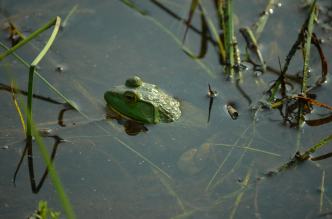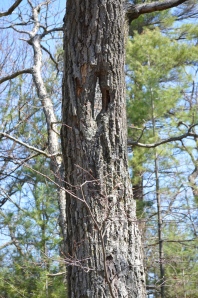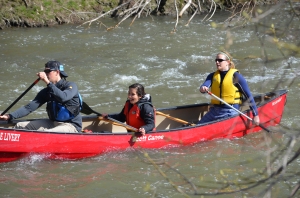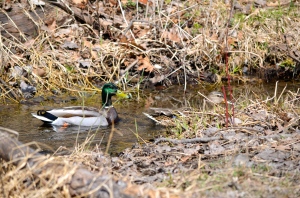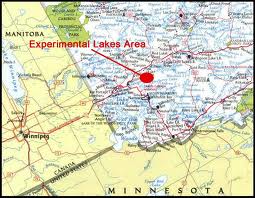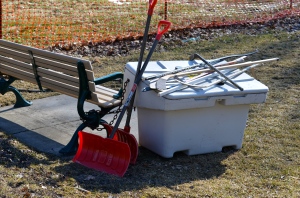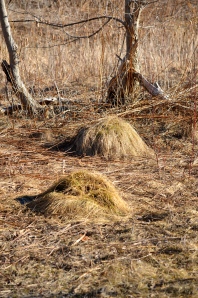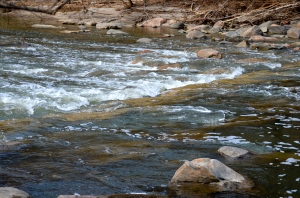In his most recent annual report, Gord Miller, the environmental commissioner of Ontario recommended that, “the Ministry of Agriculture and Food and the Ministry of the Environment undertake monitoring to determine the prevalence and effects of neonicotinoids in soil, waterways and wild plants.”
 With 25% of the global pesticide market, neonicotinoids are the most widely used insecticides in the world. Developed as an alternative to aerial spraying, they are mostly applied as a seed treatment where they diffuse throughout the plant including its sap, pollen and nectar. They are suspected of playing a role in the decline of pollinators such as honey bees along with other stressors such as parasites, habitat degradation, decreased resource diversity, climate change and invasive species.
With 25% of the global pesticide market, neonicotinoids are the most widely used insecticides in the world. Developed as an alternative to aerial spraying, they are mostly applied as a seed treatment where they diffuse throughout the plant including its sap, pollen and nectar. They are suspected of playing a role in the decline of pollinators such as honey bees along with other stressors such as parasites, habitat degradation, decreased resource diversity, climate change and invasive species.
The European Union banned “neonics” as they are popularly known, some time ago in some but not all agricultural applications. These rulings have been challenged repeatedly, but various courts have upheld the bans, falling back on the precautionary principle in the face of often confusing data and the lack of consistent protocols in determining the impacts, sub-lethal and chronic impacts for example, on pollinators.
“New research on neonicotinoids is being published at an astounding rate, demonstrating an overwhelming level of concern within the scientific community. While much of this research initially focused on the effects of neonicotinoids on pollinators, serious issues are being raised surrounding the broader ecological implications of neonicotinoid use,” writes the Commissioner.
An issue that pits manufacturers of a pesticide with a huge reach and the agri-business (87% of the world’s major crops are dependent upon pollinators) against scientific and lay communities with deeply held concerns about its effects on food and the environment represents a very high level of intellectual warfare.
There’s a pattern to this kind of warfare: manufacturers insisting upon the harmlessness of their products buttressed by their own research and litigious and public relation campaigns; highly competitive food producers; funding-strapped, over-worked, over-stretched, publicly-supported scientists; government agencies and their tangled bureaucracies adjudicating these warring parties based on evidence that doesn’t line up or they can’t understand; journalists who rely on press releases; a tax-weary skeptical public; and governments that won’t or can’t or think they shouldn’t be protecting environmental interests in the face of galloping expertise that always exceeds their grasp.
 Given these hazards, Ontario can expect to run into some heavy weather if it attempts to seriously challenge the role of neonics. In 2013, The European Environment Agency published a thoroughly documented account of its exhaustive struggles concerning the neonicotinoid Gaucho® as part of a series called Late Lessons from Early Warnings: science, precaution, innovation. All the players including Bayer the pesticide manufacturer, publicly supported scientists, the beekeeping community, and various EU food-related agencies participated.
Given these hazards, Ontario can expect to run into some heavy weather if it attempts to seriously challenge the role of neonics. In 2013, The European Environment Agency published a thoroughly documented account of its exhaustive struggles concerning the neonicotinoid Gaucho® as part of a series called Late Lessons from Early Warnings: science, precaution, innovation. All the players including Bayer the pesticide manufacturer, publicly supported scientists, the beekeeping community, and various EU food-related agencies participated.
Honeybees have been aptly described as bio-warning systems, but they’re actually environments in microcosm, super-organisms, with many moving, highly engineered parts that together amount to a complex community. And all this complexity had to be captured in the EU research.
Difficulties arose at the outset. Researchers could not agree on what dosage was harmful to bees and there were many categories of harm, the fall-down-dead type and sub-lethal and chronic effects that impacted the bees’ physiology and immune system, effects that might become lethal over time or make the colony more prone to diseases.
As it turned out, extraordinarily minute quantities of neonics were causing problems for bees including memory loss and learning, interference with foraging, reduced reproduction and queen production, impaired immune function and increased susceptibility to pathogens. And depending upon the role the bees played and their age their exposure differed. Nectar and pollen stored and then fed to the young enlarged its effects. And effects differed among colonies that bore surprisingly varied genetic signatures.
Bayer had conducted pre-approval studies of the effect of Gaucho® on aphids, which it claimed were ten times more sensitive than honeybees. Other researchers were astonished by this “extrapolative assumption.” Aphids only showed effects in the short term while bees were repeatedly ingesting Gaucho® over the long term.
For Bayer, the gold standard was field and semi-field tests, even though the variables were seemingly infinite and uncontrollable. For this reason the publicly funded scientists preferred laboratory tests, where all the various factors could be held constant.
The publicly funded scientists felt their scientific integrity challenged by Bayer. One stated, “I personally received a letter from Bayer threatening me with a lawsuit for defamation. The letter, written by Bayer’s lawyers, warned of both judicial action and financial reparations.” As well, this researcher’s supervisor was pressed to use his influence with the researcher to modify his conversations with the press, pressure that was resisted.
The challenges continued. After years of work, a scientist suddenly found himself removed from the file. A researcher had his funded project on imidacloprid, the active ingredient in Gaucho® cancelled after much work had been done on it. Bee experts found themselves outnumbered by non-experts on decision-making committees. At one point, the Commission of Toxic Products came out with a decision in favour of Bayer without consulting its own Honeybee Working Group. To make its decision seem more palatable, the agency reframed the purpose of the study as determining whether Gaucho® was responsible for all honeybee deaths in all of France, a ludicrous assumption.
Beekeepers felt the heat as well. Bayer took three of their representatives to court accusing them of discrediting Gaucho®. Fortunately, the courts found against the company, with one judge reprimanding the plaintiff for attempting to intimidate the defendants.
 By Bayer’s own admission Gaucho® persisted in the soil (188 plus or minus 25 days) longer than the European Union allowable threshold of three months. It cropped in untreated plants. Bees infected with both a particular pathogen and Gaucho® showed higher mortality rates than bees affect by either one.
By Bayer’s own admission Gaucho® persisted in the soil (188 plus or minus 25 days) longer than the European Union allowable threshold of three months. It cropped in untreated plants. Bees infected with both a particular pathogen and Gaucho® showed higher mortality rates than bees affect by either one.
Long term, seed dressing may prove to be less efficacious than a topical application. Because it exerts a constant pressure on natural selection, it increases the likelihood of the plant becoming resistant. It’s a preventative measure applied whether needed or not, much like the misuse of antibiotics with possibly equally negative results.
What happens on farmers’ fields of course doesn’t stay on farmers’ fields.“Troubling questions are being raised about the broader environmental effects of these pesticides. Only a small portion of the active substance is taken up in seed-treated crops, and the rest enters the environment. This is of concern because neonicotinoids are not only persistent in soil and water, but are also water soluble and highly mobile within ecosystems, ” writes the Commissioner.
Among the lessons learned from the EU experience is, obviously that you can’t rely on insecticide companies or industry to get at the truth, but neither can you reply on environmental groups that are great at setting off bio-alarms, but may pick their agendas to further their survival as organizations. The really wobbly link is public scientists whose existence might be as precarious as the honeybees. These are the people we should be worried about.
Join me in conversation on Twitter @PennyPepperell
Managing New Challenges: Annual Report 2013/2014, Environmental Commissioner of Ontariohttp://www.eco.on.ca/index.php/en_US/pubs/annual-reports-and-supplements/2014-managing-new-challenges
Late Lessons from Early Warnings: science, precaution, innovation, “Chapter 16 seed-dressing systemic insecticides and honeybees,”, European Environment Agency http://www.eea.europa.eu/highlights/neonicotinoid-pesticides-are-a-huge

